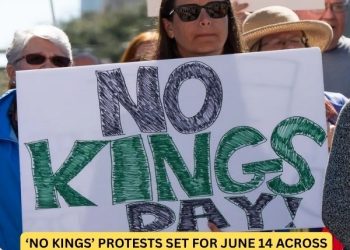A new federal budget bill could lead to the sale of thousands of acres of Oregon’s public lands and a major increase in logging—if it passes Congress.
U.S. Sen. Mike Lee (R-Utah) introduced a draft of the so-called “Big Beautiful Bill” on Wednesday. Lee, who chairs the Senate Energy and Natural Resources Committee, has long supported selling off federal land for housing. His latest proposal would allow the U.S. Interior and Agriculture departments to sell off between 2.2 million and 3.3 million acres of Bureau of Land Management (BLM) and Forest Service land in 11 states, including Oregon. That represents less than 1% of all federal land.
The bill also calls for the Forest Service to increase logging by 75% over the next 10 years. But industry experts question the feasibility of that goal, noting the agency has consistently missed its timber harvest targets for more than a decade. However, higher tariffs on Canadian lumber could shift demand to domestic sources.
The Senate faces a July 4 deadline to vote on the Republican-backed reconciliation bill.
Housing at the Heart of the Land Sale Push
The legislation aims to address the housing crisis by selling federal lands for development. It instructs federal officials to work with governors and tribes to choose which lands to sell and consider local housing needs. Five percent of the sale proceeds would go to local governments.
Oregon, in particular, faces a steep housing shortage, with the state needing to build about 30,000 new homes annually, mostly in Portland and the Willamette Valley. But critics argue this bill won’t help the people most in need.
Sen. Ron Wyden (D-Ore.) slammed the plan, saying it favors wealthy developers over essential workers like “nurses and firemen.”
“There are no do-overs when it comes to selling off public lands. Once they’re sold, they’re lost forever,” Wyden said. “This proposed Republican yard sale of natural treasures is a non-starter.”
Wildfire Risks and Questionable Land Value
A Headwaters Economics report found that most BLM parcels in Oregon, Washington, and Idaho are too small or remote to support meaningful housing development. Meanwhile, many of the Forest Service lands near high-need areas are in zones with high wildfire risk.
“Using Bend as a good Oregon example, should we really be building more into the national forest and wildfire urban interface?” asked Arran Robertson of Oregon Wild. “There would be recreation and habitat costs, but more importantly, putting more housing directly in a fire-evolved forest is not good policy.”
The bill also pushes to eliminate “checkerboard” land patterns, a move that could target O&C lands in Western Oregon—2.4 million acres of BLM-managed forest often at the center of debates over logging and conservation.
Environmental groups and Democratic lawmakers say the bill prioritizes private development over sustainable public land management and long-term housing solutions.









